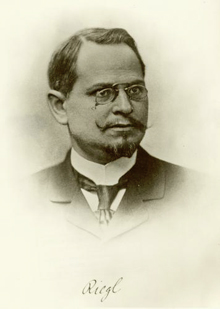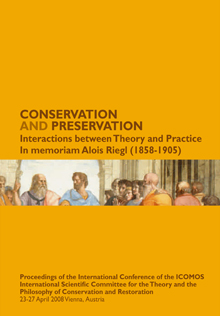Ricerca Veloce
Ricerca Avanzata

Alois Riegl
Alois Riegl (Linz, 14 gennaio 1858 - Vienna, 17 giugno 1905), tra i massimi esponenti della Scuola di Vienna di storia dell’arte, svolse un ruolo rivoluzionario nella rivalutazione delle arti minori (arte popolare, arte ornamentale, architettura) e delle cosiddette epoche di decadenza (arte tardoromana, barocca, dell’Ottocento); nella scoperta del ruolo dell’osservatore e nella nascita dell’estetica della ricezione; nell’industria artistica, a partire dalla raccolta sull’arte applicata nel MAK viennese (Museum für Angewandte Kunst) di cui fu direttore; nei fondamenti della conservazione dei monumenti come disciplina autonoma.
Alois Riegl (14 January 1858, Linz - 17 June 1905, Vienna) was an Austrian art historian, and is considered a member of the Vienna School of Art History. He was one of the major figures in the establishment of art history as a self-sufficient academic discipline, and one of the most influential practitioners of formalism.
Riegl became a professor at the University of Vienna in 1897. He represented the Vienna school of art studies. His polemic against G. Semper’s theory that material was the key element determining the laws of forms had a great influence on the development of Riegl’s views. Riegl rejected the normative view that was characteristic of 19th-century art studies, which interpreted art history as a sequence of periods of decline and progress evolving toward a common ideal. He advanced the concept of an immanent artistic will that determined the characteristic features of each artistic era, including periods of haptic (flat, tactile) and optical (three-dimensional) treatment of form. Despite the idealism of Riegl’s hypotheses, his theory led to the development of more varied techniques for analyzing artistic form.
